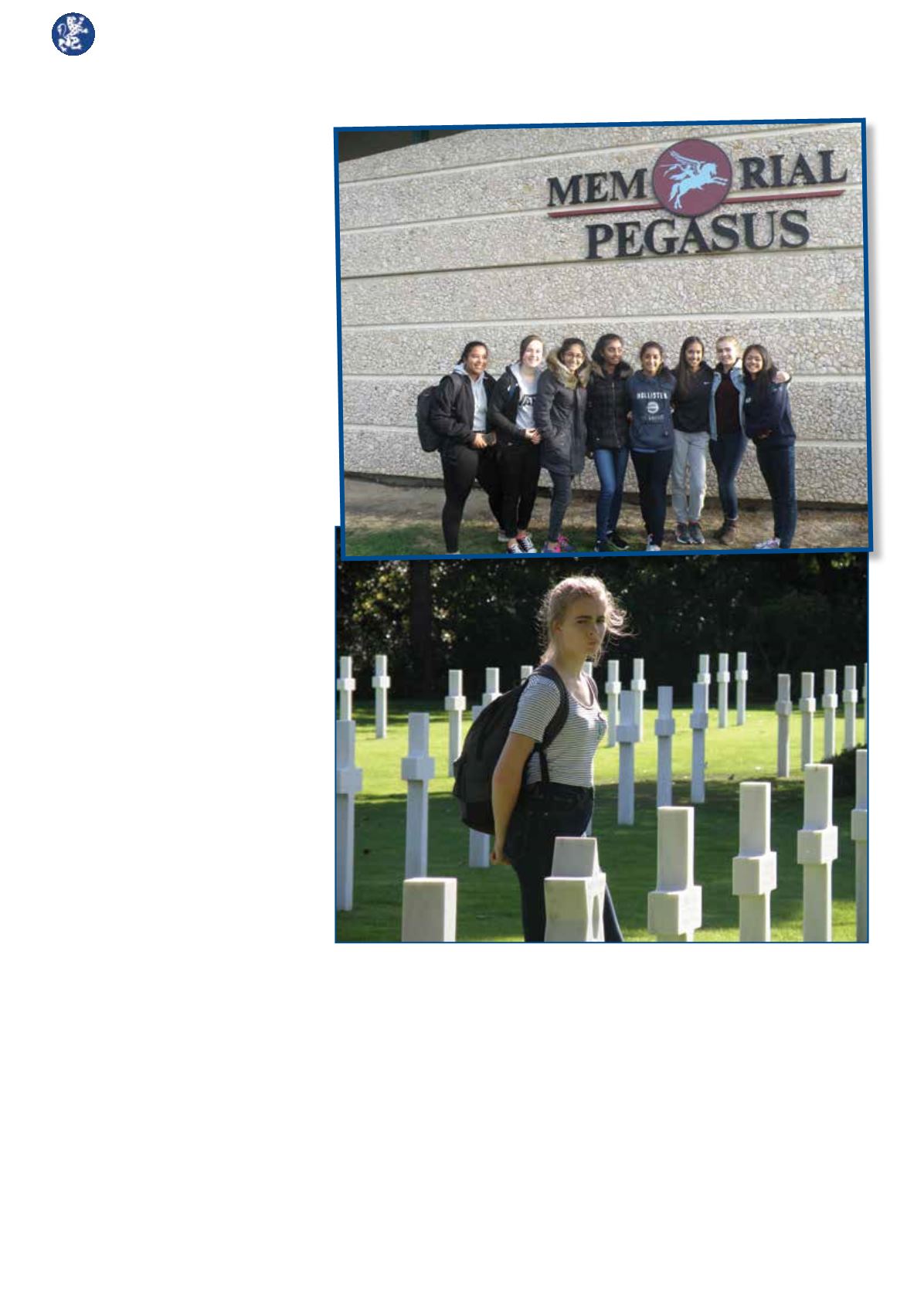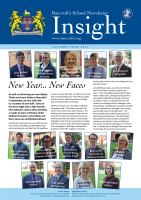

Battlefields Trip
Emilia Hitching, 5W
One of the many changes that have
come into effect as a consequence
of the new GCSE system is that
the much-anticipated Fifth Form
Battlefields trip has been revamped.
Whereas previous years have visited
Belgium’s trenches from the First
World War, we were the first to
visit Normandy. This was the centre
of the D-Day attacks, which were
instrumental in securing the Allied
victory. An early start on a Friday
morning saw around sixty Fifth
Form historians embark on the
journey to Normandy. This first was
predominantly travel-based, with
a stop in Honfleur to appreciate
French culture (especially helpful
for those of us taking GCSE French
to get some practice in!) Once we’d
arrived in Normandy, the evening
was rounded off with free time
on the beach and Dr Hunn and Mr
Brennand’s famed first night quiz.
Tired out from a long day of travel,
we retired to our rooms and readied
ourselves for the next day.
D-Day and the Second World War as a whole
is a large part of one of the GCSE papers
concerning the development of warfare. As
a result of this, we visited many different
sites from the 1944 invasion. Our first stop
was the Pegasus Bridge Memorial, opened
by Prince Charles, where the attacks began
in the early hours of 6 June 1944. Here we
saw a replica of the glider planes Allied
forces landed in. We were shocked to learn
that the frame of the original plane was
made of wood just 3mm thick and began
to comprehend how risky an attack of this
nature had been. Inside the museum, we saw
privates’ uniforms and letters home to wives
and mothers, as well as pictures of squadrons
and old medals. One student even found a
section dedicated to one of her ancestors,
John Howard, who had been instrumental in
the success of D-Day’s first stage.
Next we visited a museum at Arromanches,
overlooking Gold Beach. A viewing platform
allowed us to appreciate the scale of the
beach and the attack itself. However, the
greatest spectacle here was the 360-degree
cinema. This showed the French occupation
by the Nazis and how the Allied attacks on
D-Day led to French and wider European
liberation by VE-Day. Footage from the time
of the genuine joy and exhaustion of the
French who were occupied was especially
moving and interesting – while we often
focus on the experience of the British and
German, those who were under siege for
almost six years are often forgotten.
From here, we visited the American beach
Omaha, where what is considered to be the
toughest battle of D-Day was fought. Seeing
first-hand the lack of protection soldiers
had other than shingle to crouch behind
reaffirmed for us the realities of war and
the sense that these ordinary men were up
against an extraordinary foe. The American
cemetery here was for me the most
poignant part of the trip. Modelled after the
Washington Mall and beautifully maintained,
it was nevertheless heart-breaking to see the
sheer number of men who had died within
such a short space of time and to think of all
those affected by their loss. The first view of
the graves is one that will stay with us for a
long time.
On our return trip, we visited the site of
V2 development and testing, used by the
Germans to fire at London itself. Here we
wandered the very tunnels elite Nazis had
walked and learned about the intended
use of the location, before Allied bombing
destroyed the tunnels and missiles had to be
fired on a mobile basis. It was so interesting
to track the lives of German technological
engineers post-denazification. Perhaps the
most prominent, Werner von Braun, became
a NASA rocket specialist, working to put Neil
Armstrong on the moon, and even presenting
on Disney’s science and space channel!
I cannot recommend the Battlefields trip
enough to GCSE historians. While one of the
aims is to return to England with a better
understanding of the Paper 2 content, we left
with a greater understanding of the sacrifices
made for us during the war and a profound
sense of how much we owe it to these men
and women to preserve peace today.
HUMANITIES 13

















